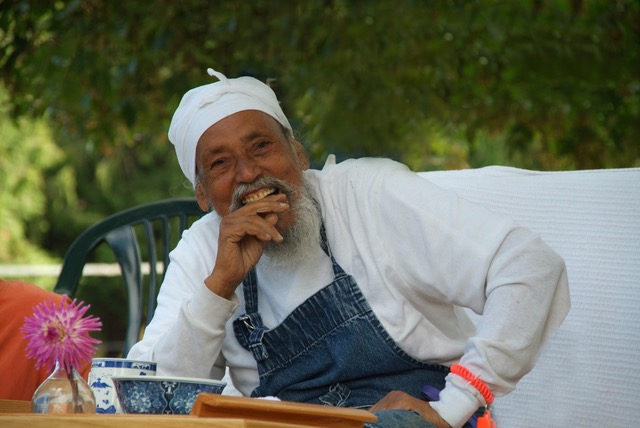Seeing the Best in Each Other
Imagine what the world would be like if we could all see the best in each other.
Seeing the best in others doesn’t mean we wouldn’t see their weaknesses and shortcomings, but we’d see them through the lens of compassion and love. When someone is stuck in a negative state, we’d understand that they’re suffering. Even when their unhappiness – appearing as anger, blame, or some other form of misery, is aimed at you, you would realize that it’s not personal; it may be directed at you, but chances are the source of unhappiness lies elsewhere, probably something older and deeper.
Tara Brach says, “Imagine you are walking in the woods and you see a small dog sitting by a tree. As you approach it, it suddenly lunges at you, teeth bared. You are frightened and angry. But then you notice that one of its legs is caught in a trap. Immediately your mood shifts from anger to concern; you see that the dog’s aggression is coming from a place of vulnerability and pain. This applies to all of us. When we behave in hurtful ways, it is because we are caught in some kind of trap. The more we look through the eyes of wisdom at ourselves and one another, the more we cultivate a compassionate heart.”
If we could see others without adding another layer of reaction, we could step back and see their internal struggle. We’re all walking around with tender hearts, longing to be seen as worthwhile.. The Persian poet, Hafiz (translated by Daniel Ladinsky), says it beautifully:
Admit something:
Everyone you see, you say to them,
“Love me.”
Of course you do not do this out loud;
Otherwise,
Someone would call the cops.
Still, though, think about this,
This great pull in us
To connect.
Why not become the one
Who lives with a full moon in each eye
That is always saying,
With that sweet moon
Language,
What every other eye in this world
Is dying to
Hear.
Babaji says: If the mind is not filled with divine light, bliss and peace, then all the efforts of yoga are useless.
Just as water and oil don’t mix, an impure mind always separates from all godly qualities. So long as an aspirant doesn’t try to cultivate good qualities – compassion, love, equality and selfless service – all yogic exercises will be useless efforts.
In yoga circles, people often use the word ‘namaste’. It means ‘I bow to you’. It refers to seeing the divine in each other.
Describing the moment he experienced the truth of our unity, the Christian mystic Thomas Merton wrote: “Then it was as if I suddenly saw the secret beauty of their hearts, the depth of their hearts where neither sin nor knowledge could reach, the core of reality, the person that each one of us is in the eye of the divine. If they could only see themselves as they really are, if only we could see each other that way all the time, there would be no more need for war, for hatred, for greed, for cruelty. I suppose the big problem would be that we could fall down and worship each other.” (quote from Radical Acceptance by Tara Brach)
Ultimately, there aren’t any others: the fundamental consciousness that exists in all beings is the same in everyone. Only the outsides are different (how we look, what we do, how we go through life), but inside there is no difference. What we can do: question our thinking, develop positive qualities, and practice seeing the good in everyone, including ourselves.
When asked, “How are we supposed to treat others?” Ramana Maharshi replied, “There are no others.”
Love and hate are two opposites. If one is capable of removing hate within, then love will emanate without.
Love for the small self veils the divine within. Love for the divine Self reveals the divinity in everything.
Love is a universal religion.
Love everyone, including yourself. That is real sadhana.
Contributed by Sharada
All quotes in italics are from writings by Baba Hari Dass

